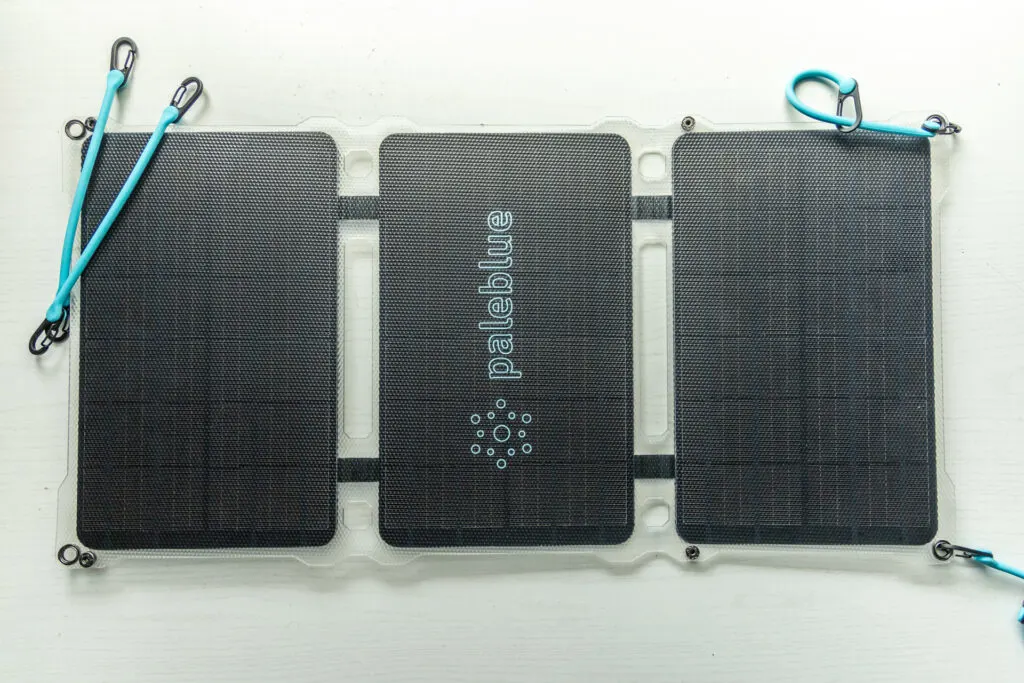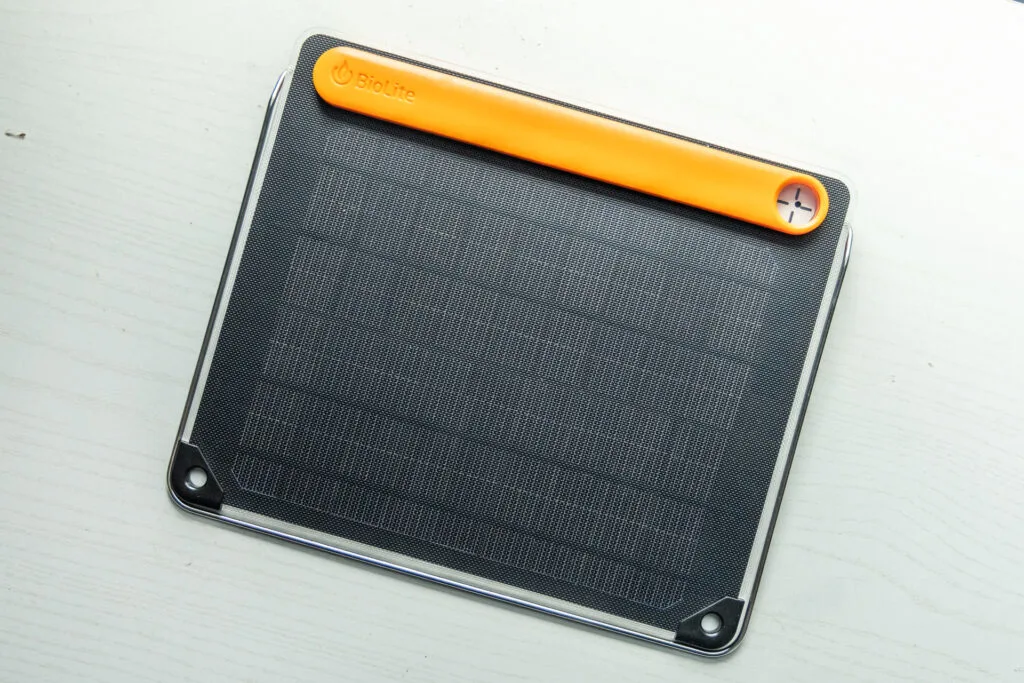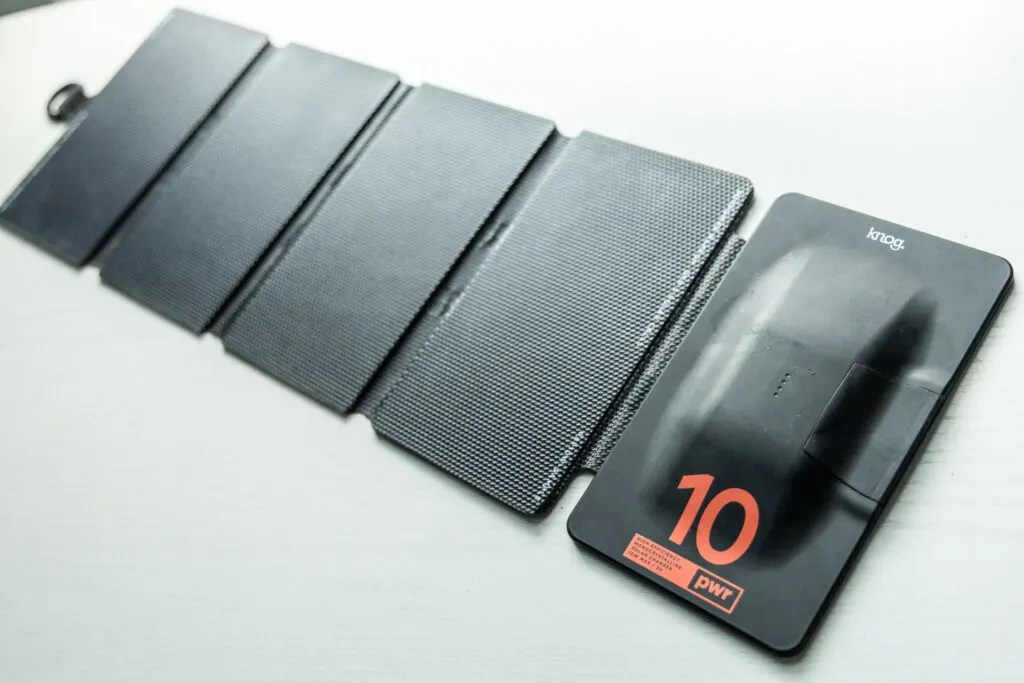The Best Deals on Camping, Backpacking and Outdoor Gear [May 2025]

Check out these four portable solar panels for backpacking and camping that promise to keep all your devices charged and ready to go, whether that includes you phone for digital maps, a portable speaker for evening hangs, rechargeable headlamps, or whatever you like to keep powered up in the outdoors.
Do keep in mind that the amount of power solar panels provide and how fast they charge is generally directly related to the size of the panel itself. So these, being portable, will take longer to charge devices than a larger solar array.
A note on testing: We tested these in similar conditions, but as we’re not scientists, time of day or amount of sun varied slightly. We did use the same phone for each power output experiment, though. To test each portable solar panel, we placed them outside and left them in a stationary position facing the sun for an hour, noting the battery level of the phone before and after. We mostly tested the panels in the morning as the midday summer heat in Utah often caused our phone to overheat midway through the process (even though it was in the shade).
4 Portable Solar Panels for Backpacking and Camping

BioLite SolarPanel 5+ Review: The One With a Built-In Battery
This solar device has the benefit of being the slimmest and the lightest of the bunch (though it doesn’t have the smallest physical footprint since it doesn’t fold up like the others). Instead, it’s comprised of one solar square and a collapsible metal stand that can be deployed to help you prop it up or hang it in just the right position. Another handy feature to ensure you get the best exposure to the sun: a little sundial on the top right corner. Position the panel so the dot’s shadow is right smack in the middle and you’ve got yourself the perfect angle.
This is also the only panel on this list with a built-in battery (3,200mAh). That means you can pre-charge it before you leave home so even if you need to charge something after the sun goes down, you’ll have a little juice ready when you need it. The panel has one standard USB port plus a micro USB port for power input (to charge the battery) and output.
But there are downsides. For starters, the built-in battery means there’s a safety “shut down” function. When the panel gets too hot (which it did during testing on a sunny 90ºF day), it stops all power from going in or out until the battery cools down. Meaning you won’t be able to charge anything whether you’re using the battery or just trying to charge your smart watch with solar. That could be a problem if you live or regularly use it the panel in hot climates. Second, when the onboard battery wasn’t charged, the solar panel didn’t seem to charge a phone at all using just the power of the sun, even when the panel was in full sun. So this isn’t our top pick, but it could still be a decent option if you simply want to charge the onboard battery by day and charge a device by night.
Weight: 13.25 oz
Power Output: 5 watts. The built-in battery charged an iPhone 14 Pro 40% before it ran out of juice. It didn’t charge a phone at all if the onboard battery wasn’t charged up.
Pros
- Sleek and portable
- Built-in kickstand and solar dot help align it in the best position for charging
- The battery can be charged via USB-C in addition to solar
- IPX4 weather resistant
Cons
- Overheats in hot climates, making it unusable until it cools down
- DOesn’t charge using only the solar panel if the onboard battery was drained

Knog PWR Solar Panel 10W Review: The Compact One
Looking for something with a small physical footprint that won’t feel bulky and unwieldy in your bag? The Knog PWR Solar Panel is it. Magnets keep it handily closed, accordion-fold style, when it’s not in use, but it’s quick and easy to unfurl when it’s time to charge. There’s no stand or included bungees for propping it at the perfect angle or hanging it from a tree, but there is an attached D-ring so you can rig your own system. There are also four little lights on the front that light up based on how much sun it’s absorbing. Position it so all four are lit up, which indicate maximum charge capability.
It does only have one USB output port, so there’s not as much flexibility when it comes to what charging cables you’ll need to pack. But it is water resistant when the USB cover is sealed shut (IP65 rated), and the panels themselves are highly weather resistant.
Weight: 15.5 oz
Power Output: 10 watts, 5 volt output. Charged an iPhone 14 Pro 20% in an hour when 2-3 power dots were consistently lit.
Pros
- Compact
- Power input lights indicate how much juice panels are absorbing
Cons
- Heavy
- Only one USB output port

Pale Blue Approach 2 Review: The Powerful One
While it may be the heaviest of the bunch, the Pale Blue Approach 2 also has the largest surface area, meaning it also offers the biggest power boost in the shortest time. And since it folds up into a tolerably flat package, it doesn’t even take up that much space in your bag or trunk. We love that it comes with four bungees so you can attach it securely to your kayak, backpack, tent, or whatever via a reinforced O-ring on each corner. This feature came in handy even when using it in the backyard where I hung it on a few chairs to get the perfect angle.
It features two USB ports for simultaneous charging, plus there’s a stretchy pocket on the back, which turned out to be a great place to stash a phone or a battery pack or whatever it is you’re charging. I actually really appreciated this feature, which made it easy to keep everything together if you’re on the move or have to relocate the panel to a different spot. There are also three colored lights on the back (a bit harder to read than they would be on the front) that indicate the speed at which your device is charging based on how accurately it’s positioned toward the sun. There’s also a smaller 7w Approach 1 available.
Weight: 27.7 oz
Power Output: 21 watts, 5 volt output. It charged an iPhone 14 Pro about 25% in an hour.
Pros
- Fairly compact when folded
- Pocket on the back for stashing a phone or battery pack
- Dual charging capabilities
Cons
- On the heavy side
Bottom Line: Portable Solar Panels
No matter what adventure you have planned, camping, backpacking, travel, or water sports, one of these portable solar panels will do the trick. Just don’t forget to pack a trusty backup battery, too, for when the sun isn’t shining but you still need juice. Then get out there, keep your devices charged, and wander on confidently.
